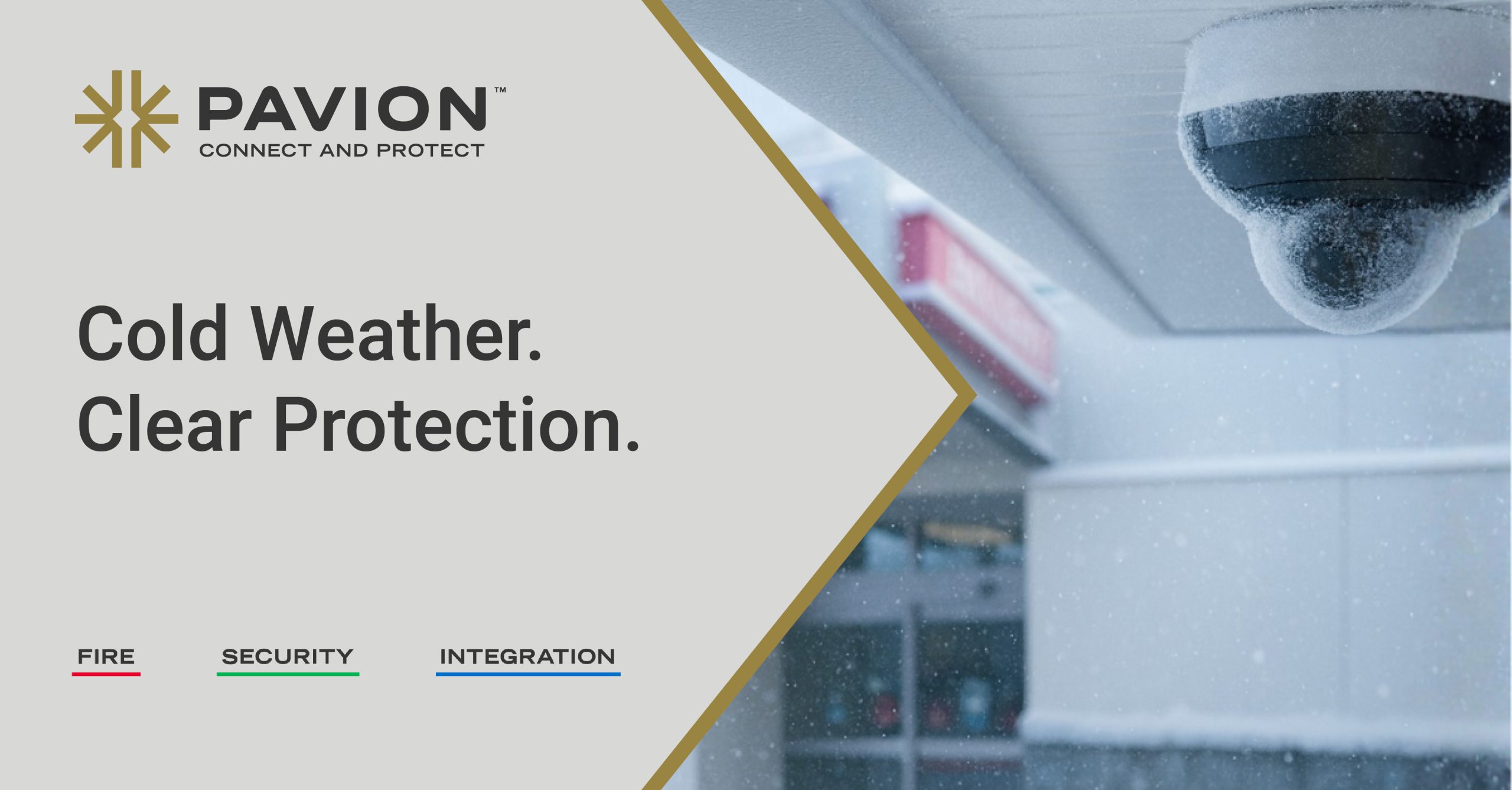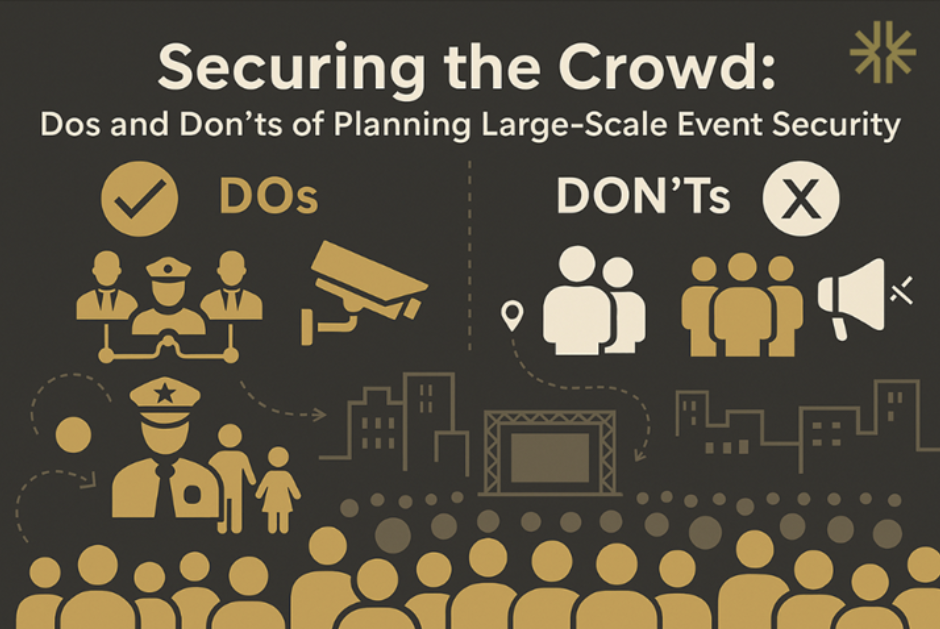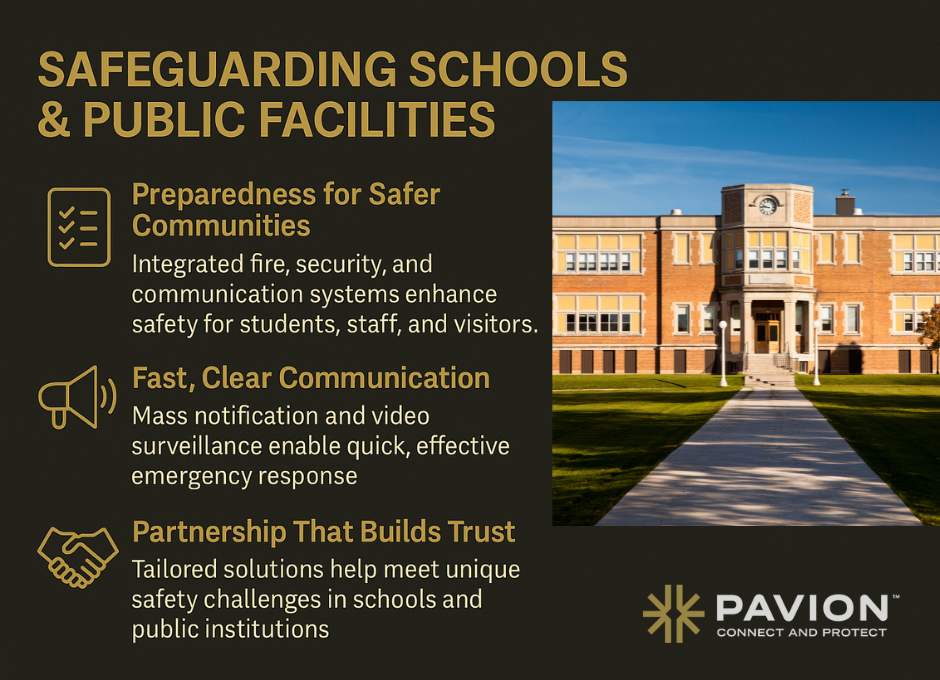
Winter Weather Security Risks: How to Keep Your Facilities Protected When Temperatures Drop
Winter weather brings more than snow and freezing temperatures. It creates real challenges for security and life safety systems that keep your people, property, and operations protected. As temperatures drop, cameras can ice over, fire alarm components can fail, and access control systems can become unreliable. The result is reduced visibility, slower response times, and increased vulnerability during a time when risks can be at their highest.
Proactive winterization is essential for ensuring that your systems perform as expected, even in the harshest conditions. Below are key risks to be aware of and steps you can take to keep security uninterrupted all season long.
How Cold Weather Impacts Security and Life Safety Systems
Security Cameras
Cameras mounted outdoors face some of the toughest winter conditions. Common cold-weather challenges include ice or frost obstructing the lens, moisture seeping into the housing, slow or frozen PTZ movement, fog from drastic temperature shifts, and power or connectivity issues during storms. These issues can leave blind spots or degraded image quality at the very moment visibility matters most.
This is why it’s essential to work with a security partner who understands these environmental challenges and selects the correct camera with proper ratings (IP66, IP67, or IP68) to withstand harsh winter conditions.
Access Control Systems
Cold weather can interfere with door strikes and mag locks, card readers in exposed areas, and battery performance in wireless devices. Freezing temperatures can cause doors to stick or readers to malfunction, creating both security and operational problems for building staff.
This is why having a preventive maintenance agreement is critical during harsher weather. A winter PM visit allows us to test for these potential failures and take a proactive approach before issues create stress or downtime.
Fire Alarm and Detection Systems
Fire protection systems face unique risks in winter including frozen or burst sprinkler pipes, reduced water pressure, faulty smoke detection caused by humidity changes, and temperature-sensitive equipment operating outside its designed range. A compromised fire system during winter storms can delay emergency response or trigger false alarms.
This is why ensuring your annual commercial fire alarm inspection is completed is so important. It helps eliminate these risks before they become costly or dangerous problems.
Critical Communications
Emergency communication is vital during severe weather. Snow, wind, and icing can impact outdoor speakers, paging systems, mass notification equipment, and the wired or wireless networks that support them. Clear communication is essential when visibility and mobility are reduced.
This is why, during extreme winter weather, it’s important to regularly test your critical communication systems and contact our service team immediately if you detect a failure or concern.
Best Practices to Strengthen Your Winter Security Strategy
Preparing your systems now prevents failures when they matter most.
1. Winterize Exterior Cameras
• Inspect housings and seals
• Use heaters, blowers, or weatherproof domes
• Aim cameras to avoid glare from snow or lights
• Clean lenses regularly
2. Test Access Control Points
• Validate door hardware in low temperatures
• Check card reader and keypad performance
• Confirm doors fully latch in icy or windy conditions
3. Inspect Fire Protection Systems
• Ensure sprinkler rooms maintain proper heat
• Identify aging or damaged pipes
• Test all detection equipment
• Review emergency response procedures
4. Maintain Reliable Communications
• Test speakers and notification systems
• Validate backup power sources
• Confirm the system is storm ready
5. Schedule Preventive Maintenance
Mid-winter tune-ups ensure everything is functioning properly despite ongoing temperature shifts.
Winter Readiness Means Year-Round Protection
Winter weather can create real vulnerabilities, but with the right preparation your facility can remain safe, secure, and fully operational throughout the coldest months. Preventive maintenance, proactive testing, and the right technology choices keep your systems resilient and your operations uninterrupted.
Frequently Asked Questions
How often should I winterize my security systems?
At minimum once per year. Ideally, you should complete a winterization check in late fall and perform a mid-winter maintenance visit to catch issues caused by ongoing temperature fluctuations.
Do IP66, IP67, and IP68 camera ratings really matter in winter?
Absolutely. These ratings determine how well a camera can resist water, snow, ice, and dust intrusion. Choosing the wrong rating can result in moisture damage, lens fogging, or complete device failure.
Why do access control systems fail more in cold weather?
Cold temperatures can stiffen mechanical components, affect electrical connections, and weaken batteries in wireless devices. Ice buildup can also keep doors from latching properly.
Can fire alarms trigger false alerts during winter?
Yes. Extreme humidity changes, frozen sprinkler lines, or temperature-sensitive components being outside their operating range can cause false alarms or system faults.
What should I do if my critical communications system fails during a storm?
Immediately contact your service provider. These systems are essential for emergency response and must be restored as quickly as possible.
Does Pavion offer preventive maintenance for winter readiness?
Yes. Pavion offers preventive maintenance agreements that include seasonal testing, inspections, and proactive service to ensure your systems perform reliably throughout the winter.



